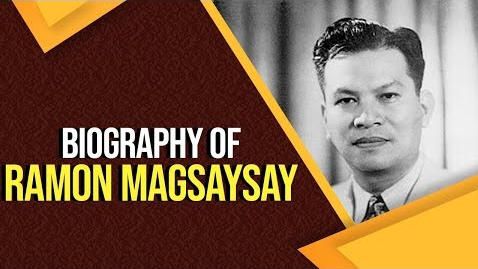Table of Contents
EARLY LIFE
- He was born in Iba, Zambales on August 31, 1907 to Exequiel Magsaysay y de los Santos (April 18, 1874 in San Marcelino, Zambales – January 24, 1969 in Manila), a blacksmith, and Perfecta del Fierro y Quimson.
- He spent his grade school life somewhere in Castillejos and his high school life at Pampanga Academy in San Narciso, Zambales. After college, Magsaysay entered the University of the Philippines in 1927, where he enrolled in a pre-medical course
EARLY LIFE
- He transferred to the Institute of Commerce at José Rizal College now Jose Rizal University (1928–1932), where he received a baccalaureate in commerce. He then worked as an automobile mechanic in a bus company (Florida) and shop superintendent.
- Magsaysay was elected to the Philippine House of Representatives in 1946, and was later re-elected to a second term. During both terms, he was chairman of the House National Defense Committee.
PRESIDENT
- From 1953, Magsaysay carried out one of the most effective anti-guerrilla campaigns in modern history; by 1953, the Huks were no longer a serious threat.
- He resigned his post as defense secretary on February 28, 1953, and became the presidential candidate of the Nacionalista Party.
- Presidential elections were held on November 10, 1953 in the Philippines. Incumbent President Elpidio Quirino lost his opportunity for a second full term as President of the Philippines to former Defense Secretary Magsaysay.
GOLDEN YEARS
- Magsaysay’s administration was considered one of the cleanest and most corruption-free in modern Philippines history; the period of his presidency is often cited as the Philippines’s “Golden Years”.
- Trade and industry flourished, the Philippine military was at its prime, and the country gained international recognition in sports, culture, and foreign affairs. The Philippines placed second on a ranking of Asia’s clean and well-governed countries
REFORMS
- President Magsaysay created the Presidential Complaints and Action Committee. He set an example of humility by insisting that he be called “Mr. President” and not “His Excellency“.
- To amplify and stabilize the functions of the Economic Development Corps (EDCOR), President Magsaysay worked for the establishment of the National Resettlement and Rehabilitation Administration (NARRA).
REFORMS
- As further aid to the rural people, the president established the Agricultural Credit and Cooperative Financing Administration (ACCFA). The idea was for this entity to make available rural credit.
- The Magsaysay administration negotiated the LaurelLangley Agreement which was a trade agreement between the Philippines and the United States which was signed in 1955 and expired in 1974.
DEATH
- On March 16, 1957, Magsaysay left Manila for Cebu City where he spoke at three educational institutions. That same night, at about 1 am, he boarded the presidential plane “Mt. Pinatubo”, a C-47, heading back to Manila. In the early morning hours of March 17, the plane was reported missing.
- By late afternoon, newspapers had reported the airplane had crashed on Mt. Manunggal in Cebu, and that 36 of the 56 aboard were killed. The actual number on board was 25, including Magsaysay.
- An estimated 2 million people attended Magsaysay’s state funeral on March 22, 1957. He was posthumously referred to as the “Champion of the Masses
Biography Free PDF






















 WhatsApp
WhatsApp